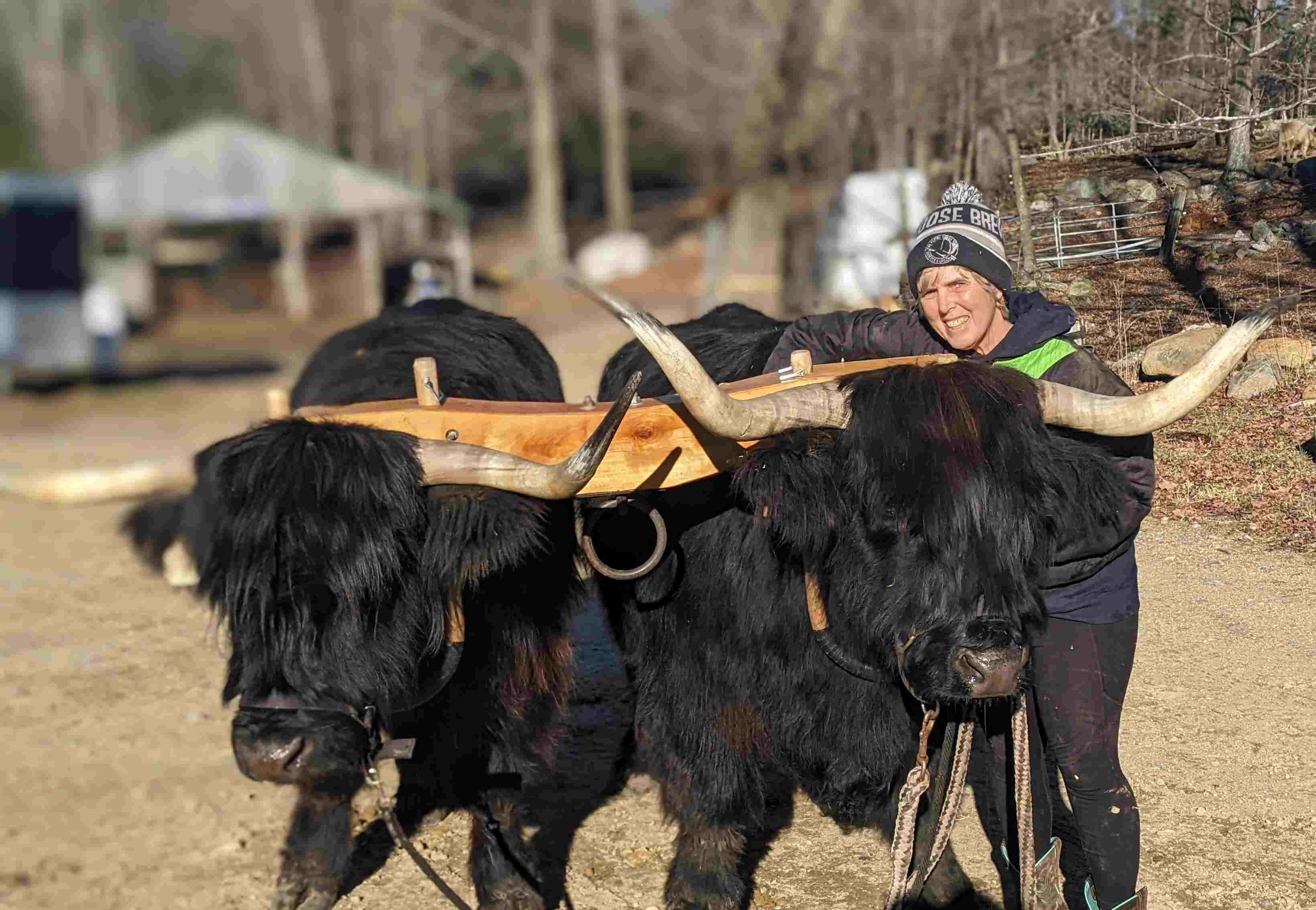Don't Argue With the Meat Fairy: A Tasty Dinner Solution
posted on
November 18, 2023
How you slice meat makes a difference. Slicing thinly across the grain makes a delicious, tender bite of steak.

Come to Christmas at the Farm on Dec 16, from 11 a.m. to 2 p.m. Your kids can sit on a Highland steer, snuggle a calf, feed the critters, and more. Sign up here
What’s the best way to cook a steak? First, I sear one side at high temperature, then flip the steak to sear the other. Once both sides of the steak have a caramelized crust, I turn down the heat and, depending on the thickness of the steak, let it cook for another 3 to 6 minutes. This should be enough. But the Meat Fairy appeared in a vision and reminded me that's not the end.
She told me that after I removed the steak from the heat, it kept cooking, and were I to cut into it, the juices would escape. My plate would be juicy, but not my steak.
That fairy said, "Let your steak rest [i.e., sit still on your plate] for at least 5 minutes. The steak will finish cooking, and the juices will stay where they belong – in the meat."
OK, I'll show restraint and wait for my steak to rest before eating it, but the Meat Fairy had more to say.
Cutting Matters
"How you cut your meat has a lot to do with how it tastes," she said. "Compare two hanger steaks, cooked to a perfect 130 degrees Fahrenheit medium-rare in the same pan, cut from the same piece of meat, and having achieved a beautiful brown, crackly crust. They look the same, but one is as tender as butter, while the other is like rubber. What was different? "The slicing!" said the know-it-all Meat Fairy. "Slice thinly against the grain for a tender bite of steak," she added and then vanished.
Having worked with cattle, I can add something to the revealed wisdom of the Meat Fairy: Not all parts of a bovine are equal. The front end is very different from the hind end.
Because a cow is front-heavy, those front muscles work hard and get tough, while the easy-livin’ muscles in the back end stay nice and soft.
Against the Grain
Furthermore, look at your steak; you'll see it has a grain, like wood. In some muscles, like the loin or tenderloin, that grain is fine because it's from muscles that don't exercise much. That meat will be soft and tender no matter how you slice it.
However, cuts from the harder-working, more flavorful muscles from the front of the animal, like skirt steak, hanger steak, or flank steak, have thicker muscle fiber bundles with a clearly defined grain. Slice these cuts of meat thinly across the grain, and you will be rewarded with flavor and tenderness.
You might not believe in the Meat Fairy, but she believes in you and wants you to cook smartly and dine sumptuously. So please pay attention to the grain of your steak, and for goodness sake, let it rest before you slice it. You'll be paid off in deliciousness with every bite.
***
Carole Soule is co-owner of Miles Smith Farm, where she raises and sells pork, raw milk, eggs, and beef. She can be reached at carole@soulecoaching.com.
Come to Christmas at the Farm on Dec 16, from 11 a.m. to 2 p.m. Your kids can sit on a Highland steer, snuggle a calf, feed the critters, and more. Sign up here



